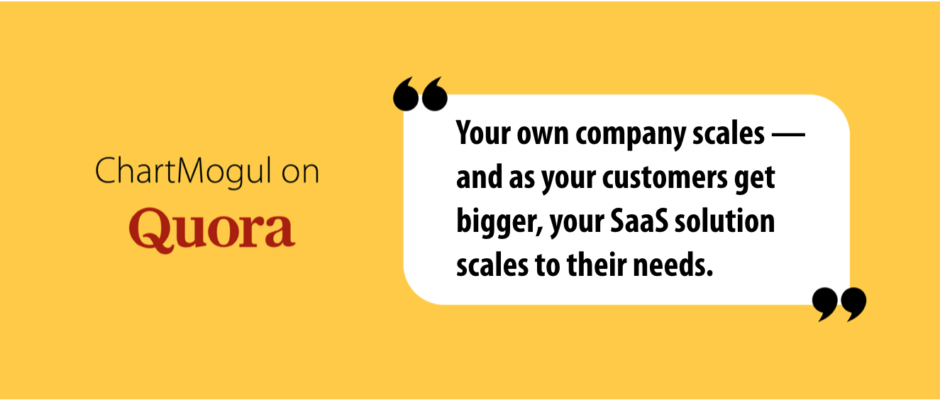Here are some of the benefits enjoyed by a company that adopts a SaaS business model.
Lower cost
- One version of the service that is accessed by all customers from one infrastructure: simple deployment and maintenance. There’s no need to manufacture anything.
- And the more customers you get, the “cheaper” it is to operate the infrastructure. With each new customer, the average cost of operation is reduced for everyone. This is called a lower Total Cost of Ownership. The economies of scale for SaaS are a huge inherent benefit.
Accessibility and Scalability
- All a customer needs is the internet and a browser. Boom.
- And that network can support any growing number of users. This means your company can easily scale to accommodate the number of your customers — but also that your service can easily accommodate your customers’ growth as well. As they get bigger, add more users, have more customers of their own, your SaaS solution scales to their needs.
Optimization and Customer Loyalty
- Since you maintain the service from one infrastructure, your product development cycles can be super short. You can push out updates and fixes immediately and at whatever frequency your team can handle. Such rapid improvement and responsiveness leads to higher customer loyalty.
Recurring Revenue model
- SaaS has compounding revenue, if customer churn is monitored and managed accordingly. This relieves the stress of constant customer acquisition — and the cost of acquiring them, too.
To learn all the ins and outs of churn, take a look at the Ultimate Churn Rate Cheat Sheet.
- Building off the customer loyalty point above, current customers are a huge source of revenue growth. Loyal customers will not only stay on board but upgrade their package, especially as you continue to enhance your offering. This is called Expansion business.
Measurability and Predictability
- SaaS businesses also have a huge advantage in the data they capture about their users: How their customers use the service, what they do in the app and when they do it, when they cancel the service altogether, etc. You can use this data to optimize your offering, easily experimenting thanks to shorter product development cycles. You can optimize your pricing and packaging, or your customer success efforts. All of this makes it easier to satisfy and retain customers — as well as target future ones.
- The SaaS business model lends itself to a set of effective metrics that measure performance and growth. Insights from these metrics can inform product development, process changes, sales strategy, customer success, future planning, and investment decisions. Here are some of the key SaaS metrics we focus on at ChartMogul:
- Monthly Recurring Revenue (MRR)
- Customer Churn Rate
- Net MRR Churn Rate
- Annualized Run Rate (ARR)
- Average Revenue Per Account (ARPA)
- Customer Lifetime Value (LTV)
If you’d like detailed definitions of each of these, plus more, check out the Ultimate SaaS Metrics Cheat Sheet.
- The recurring revenue model is proven to generate and sustain long-term profits. Business growth is more predictable, and the model provides foresight into future cash flow which allows you to predict future revenue growth and profit margins. Predictable growth and reliable projections like this are very attractive to investors, who have swarmed to the SaaS space.
- Of course the benefit of steady and predictable revenue is that you can reinvest cash into your own growth, which keeps the whole cycle going.
This answer was originally published on Quora. View the original thread here: What are the inherent benefits of SaaS as a business model?
Share and follow!
NEW on @ChartMogul — SaaS Q&A: What are the benefits of a #SaaS business model? https://t.co/wOdUfjJS6b #startups pic.twitter.com/qMrrrM7nq1
— ChartMogul (@ChartMogul) April 14, 2016
